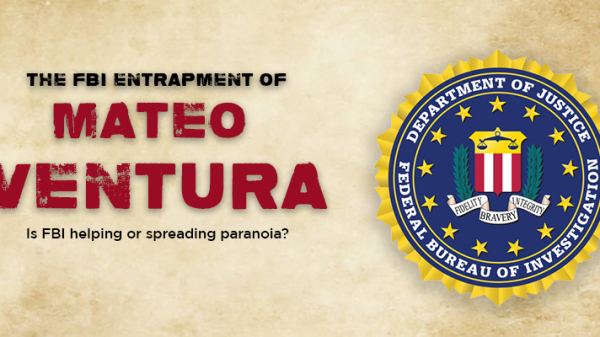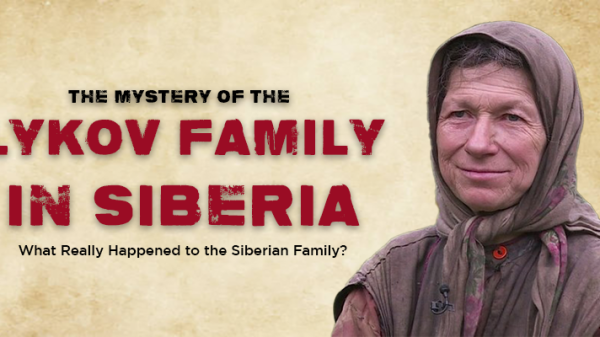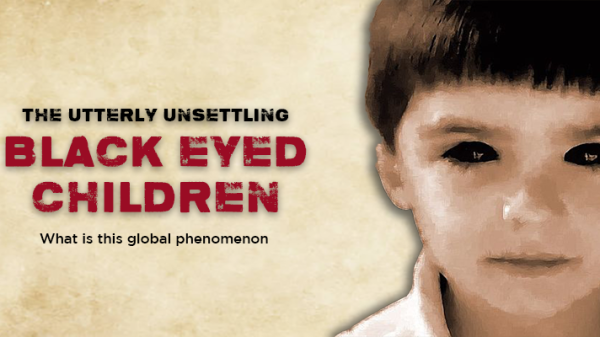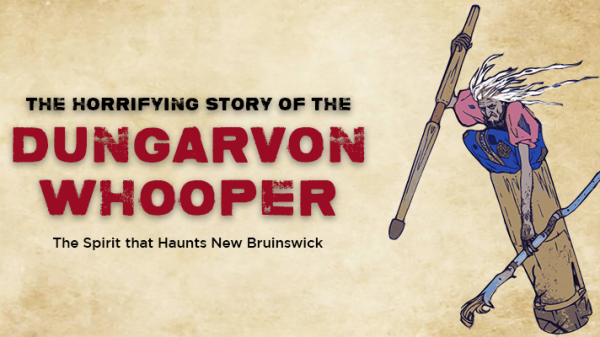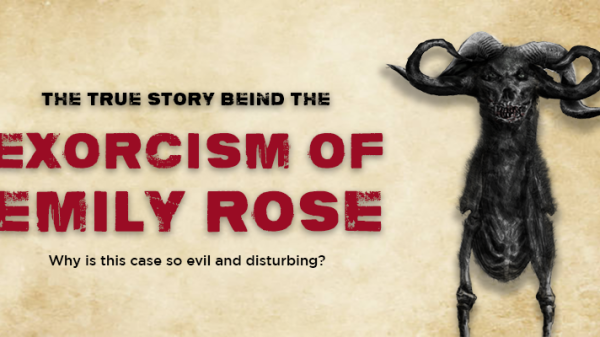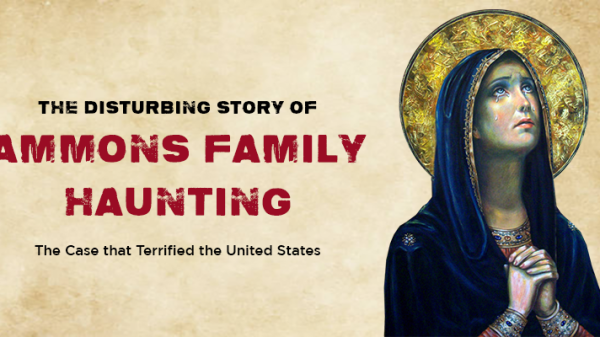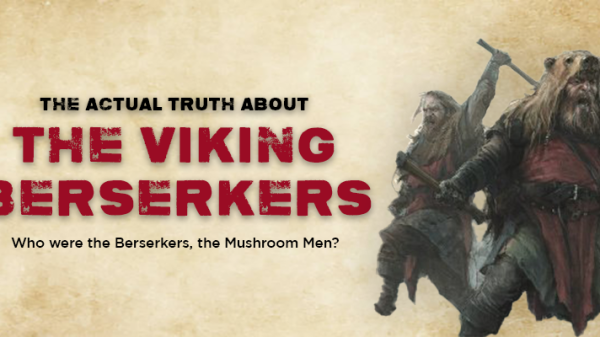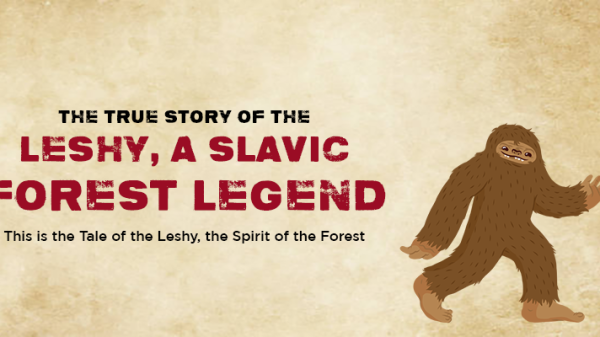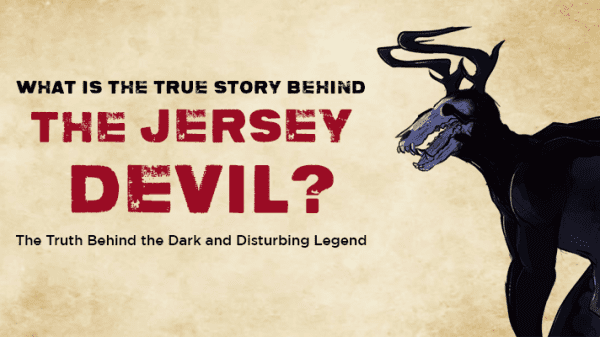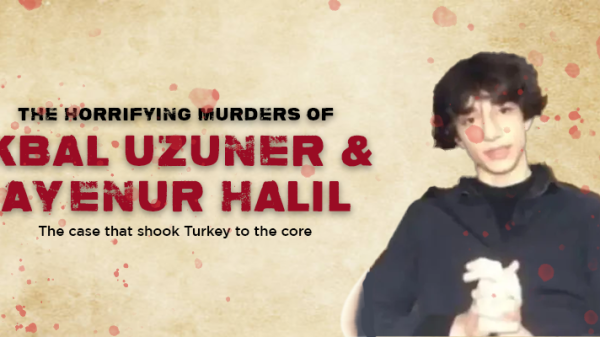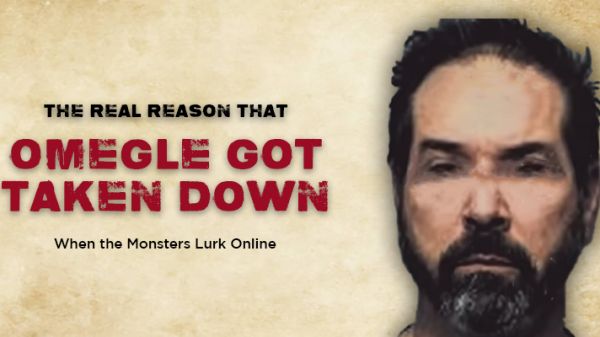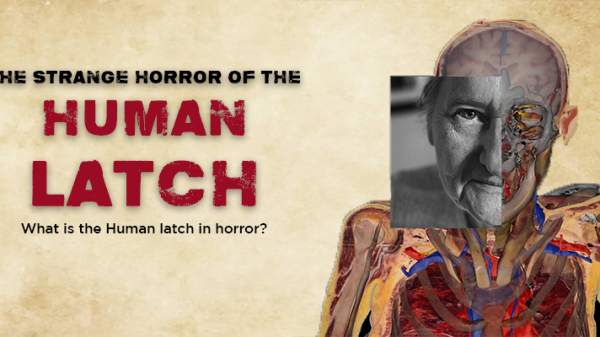Krampus is a demonic half-goat that punishes misbehaving children at Christmas and sometimes drags them to hell. He is considered the son of the Norse god of the underworld.
They claim he arrives on December 5th, known as “Krampusnacht.” He usually makes a sound as he approaches, alternating between the gentle steps of his bare human foot and the clip-clop of his cloven hoof.
When you first see him, you’ll also know he’s carrying birch branches, which he uses to beat up misbehaving kids. He goes by the name of Krampus, and during Christmastime, he terrorizes Austria and the Alpine region.
However, who is Krampus? What makes him the anti-Santa, exactly? And how did this ominous rumor begin in the first place?
What does Krampus do to Children?
Despite regional variations in depictions of Krampus’ appearance, some characteristics are universal: He is reported to have a long tongue that resembles a snake and pointed demonic horns. He has coarse fur covering his body, giving him the appearance of a goat combined with a demon.
He bears a sizable sack or basket on his back to carry away bad children, and his body and arms are adorned with chains and bells.
The evening before Saint Nicholas’ Day, Krampus arrives in town and visits every home to exact his revenge.
If you’re lucky, he might whack you with a birch branch. You’ll end up in the sack if you’re not. After that, nobody knows what will happen to you. According to tales, you can wind up as a snack, in a river, or even sent to Hell.
Saint Nicholas, who is not known to worry himself with misbehaving youngsters in Central Europe, occasionally travels with Krampus. He concentrates on giving gifts to good-behaving children and leaves the rest to his evil counterpart.

A Krampus is shown abducting children
How did Krampus become a staple of seasonal entertainment in Slovenia, Austria, Bavaria, the Czech Republic, and Bavaria? Nobody is confident, for sure.
However, most people think that Krampus originated in the paganism of the Alpine region. His name is derived from the German word Kampen, which means “claw,” and he resembles the son of Hel, the deity of the underworld, from old Norse myths.
It’s an intriguing notion, especially given that Krampus shows up around the same time as other pagan winter rituals, most notably one that involves people parading through the streets to chase away the winter spirits.
As Christianity became more prevalent in the area over time, elements of Krampus’ appearance started to change to reflect Christian principles.
For instance, the chains were not always a characteristic of Hel’s ghastly son. Christians allegedly added them to conjure up the Devil’s shackling. They also made other changes in addition to that. Krampus acquired various demonic traits under Christian control, such as the basket he uses to transport evil children to Hell.
From there, it is simple to understand how Krampus, who was already connected to winter celebrations, may have been absorbed into Christian customs and the Saint Nicholas legend during Christmas.
Modern-Day Krampus Legends
On the day before Saint Nicholas Day, Krampus now celebrates his festival in the Alpine region.
On December 5th, also known as “Krampusnacht,” gorgeously attired Saint Nicks and monstrously attired Krampuses visit houses and businesses to deliver gifts and make lighthearted threats.
Some individuals send greeting cards during Krampusnacht that feature the horned beast and include joyful and humorous comments.
Large groups of individuals occasionally dress up as Krampus and run wild through the streets, pursuing friends and bystanders while brandishing birch sticks. Among young folks, this activity is vastly well-liked.
Visitors who have seen this boisterous celebration claim that hiding in a coffee shop won’t protect you from being swatted. And they don’t precisely swat gently. Fortunately, they usually only affect the legs, and the positive environment often makes up for the odd welt.
The custom has grown significantly in many nations and now includes pricey handcrafted masks, ornate costumes, and even parades. While some criticize the celebration for becoming overly commercialized, many traditional holiday elements remain.

People dressed up as Krampus in Austria
For instance, Krampus masks are often made from wood and represent tremendous labor. Additionally, it takes months for artisans to complete the costumes, occasionally displayed in museums as examples of a continuing folk art heritage.
It’s always amazing when ancient customs survive into the modern day, but Krampus has had a tough time staying.
The fascist Christian Social Party outlawed Krampus and all Krampusnacht celebrations in Austria in 1923. Their motivations were obscure. They all seemed to agree that Krampus was a force for evil.
Still, they couldn’t decide whether it was because of his apparent connections to the Christian Devil or his less obvious references to the Social Democrats.
They distributed leaflets headed “Krampus is an Evil Man,” urging parents against using threats of a violent holiday visitor to influence young children since they were confident that Krampus wasn’t good for youngsters.
Society was not much affected, even though they may have had a point regarding the traumatic impact of teaching wayward kids that Saint Nick’s evil twin would devour them.
The restriction was only in place for roughly four years, and murmurings of discontent persisted for a short time after that. But in the end, nobody was able to subdue Krampus.

Germanic depiction of the Krampus
Krampus returned to prominence around the turn of the 20th century, and in recent years, he has crossed the Atlantic to the United States. He has appeared in cameos on numerous TV programs, including Grimm, Supernatural, and The Colbert Report.
Annual Krampus celebrations in several American cities, such as Los Angeles, include costume contests, parades, folk dances, bell-ringing, and Alpine horn-blowing. It’s customary to wear cookies, dirndls, and masks.
Check to see whether your city is hosting a Krampusnacht celebration. Remember to dress the part if you think Christmas might use a little Halloween flavor.
Terrifying Christmas Legends from Around the World
Christmas is when families may get together to share gifts, have fun, and celebrate a variety of customs, including decorating the tree and seeing Santa Claus. However, more traditional folklore from pre-Christian nations has been adapted to become the American modern Christmas celebrations.
Furthermore, some of these ideas are far darker than the happy customs of today. In contrast to the Austro-German folktale of Krampus, the evil old demon who carries off unruly children, disobedient kids these days worry that they’ll end up with a lump of coal in their stockings above the fireplace.
Discover four gruesome Christmas legends from folklore around the globe.
The Horror of Mari Lwyd
Old Welsh folklore describes a being with a veiled form, the skeleton face of a horse, and luminous eyes that goes by the name of Mari Lwyd.
During winter celebrations, the Mari Lwyd reportedly went door to door, urging people to outwit it in a competition and rewarding them with food and drink if they succeeded. It is claimed to have a penchant for rhyme schemes.
However, those who lose must permit the Mari Lwyd access to their homes and provide it with food and drink.
According to Hyperallergic, the modern ritual involves a group of celebrators, led by someone dressed as the Mari Lwyd, going from home to house and issuing “pwnco” challenges to their neighbors.
Similar to the folkloric competition, the winners usually receive food and drink as prizes.
The Mari Lwyd celebration takes place between Christmas and New Year’s Eve, but it’s impossible to predict when the day it will knock on your door.
The history of this bizarre, frightful custom is unclear, and its beginnings are uncertain.

A popular portrayal of the Mari Lwyd
According to Atlas Obscura, the tradition of the Mari Lwyd may have its roots in pre-Christian pagan cultures. However, over time, it has been modified to support Christian interpretations.
Although the Mari Lwyd is unique to Welsh tradition, it has much in common with other “white horse” figures from early European civilizations, especially the Celtic deity Rhiannon.
Mari Lwyd is frequently translated as “grey mare.” Still, some religious historians have explained the name to mean “Holy Mary,” a reference to Christian tradition, making it impossible to determine why the symbol may have been significant to ancient cultures.
When Mary gave birth to Jesus, it is said that Mari Lwyd, a pregnant mare, was kicked out of the stables and went in quest of a spot to give birth to her foal.
The legend’s roots may still need to be established, although the present version of the celebrations has been there since at least the 1800s. Even Welsh poet Vernon Watkins remembered it in his 1941 poem “The Ballad of the Mari Lwyd,” which starts:
Mari Lwyd, Horse of Frost, Star-horse, and White Horse of the Sea, is carried to us.
The Dead return.
Those Exiles carry her, they who seem holy and have put on corruption, they who seem corrupt and have placed on holiness.
They strain against the door.
They strain towards the fire, which fosters and warms the Living.
Whatever the case, the thought of a ghostly, skeletal horse stalking the streets on a chilly winter night is enough to give anyone the chills.
The Kallikantzaroi of Greece
Beware the Kallikantzaroi during the twelve days of Christmas, for they may leave their dwellings at the center of the Earth to wreak havoc and mayhem once the sun goes down.
If you’re not careful, these disgusting, ugly creatures will break into your house, urinate on your plants, destroy your food, shatter furniture, and generally be a real pain in the behind.
At least, it is what the folklore of Greece claims.
The Kallikantzaroi are said to prowl the Earth between Christmas and January 6, which is the Christian holiday of the Epiphany, according to SPIEGEL International.
The waters of the Earth are purportedly “unbaptized” or “unclean” during this season, allowing the repugnant animals to surface and wreak havoc everywhere they roam.

Classical renderings of the Kallikantzaroi
Numerous descriptions of their appearance have been made, ranging from short, hairy goblins with monkey arms and cleft hooves to ugly, human-like beings with iron clogs. What is the one thing these descriptions have in common?
Kallikantzaroi are abhorrent.
The Kallikantzaroi, according to the people at Helinika, are chthonic, which means they live in the underworld.
According to reports, their diet consists of disgusting foods, including rotting fruit, snakes, mice, and insects. They fear holy water, religious icons, and fire because they are the devil’s servants.
They also claim to follow orders from a being they refer to as their “mother,” who chooses which people will be the targets of the Kallikantzaroi’s nefarious antics.
To ward off the Kallikantzaroi, some Greek families have even put a pig’s lower jaw inside their chimneys or outside their front door. Other Greek families claim that hanging a knotted strand of flax will make the stupid critters stop and count each thread till daylight rather than attack.
Although burning an old leather shoe is said to provide additional protection because the scent is enough to keep even the foulest monsters away, starting a fire is still the most effective technique to defend your home from the Kallikantzaroi.
Hans Trapp: The Christmas Scarecrow Who Terrified France
Hans Trapp was a well-known and feared figure in the French provinces of Alsace and Lorraine in the 1400s. He was a wealthy and powerful man. Trapp, according to legend, craved power more than anything else, so he allegedly struck a bargain with the devil to acquire it.
However, Trapp’s Faustian pact swiftly spread and caught the attention of the Pope, who excommunicated Trapp, took his property and money, and exiled him from Alsace.
In the German Bavarian Mountains, where Trapp established himself as his new home, he allowed his evil impulses to fester and finally developed a craving for the taste of human flesh.
He made a straw mask to hide and waited by the roadside to sate his hunger. He appeared to be nothing more than a scarecrow to onlookers.
One day when a young child was passing by the ostensibly harmless scarecrow, it sprung into life and seized him. The boy was then fatally stabbed in the stomach by Trapp, still wearing his disguise, who then hauled the dead body back to his mountain hideout.

The legend of the Hans Trapp has terrified France for centuries
He dismembered the boy’s body there, roasting it over a fire. But thanks to a miraculous intervention, Trapp was killed by lightning before he could enjoy the human meat. However, it is said that his spirit survived.
Despite the mythic nature of this story, Hans von Trotha, a knight who lived from 1450 to 1503, was the real-life inspiration for Hans Trapp. Von Trotha ruled over two castles in Palatine, but one was the subject of a dispute with a nearby abbot over some of its contents.
The knight built a dam to cut off the water supply to the neighboring town of Weissenberg after the abbot refused to give von Trotha access to some of the property. After the dam was eventually destroyed, von Trotha was excommunicated by the Pope, just like in the Hans Trapp tale.
Von Trotha, in contrast to his folktale counterpart, proceeded to have a prosperous life at the French royal court. Additionally, based on what is known about history, he did not consume child flesh.
The “Whipping Father” of Saint Nicholas: Père Fouettard
Here, we encounter Père Fouettard, a type of anti-Santa who enjoys devouring children, as another of Santa Claus’ less savory companions.
Several tales refer to Father Whipper, but the most popular one is that of an evil butcher who kidnapped three children, dating back to around 1150.
The butcher in the tale slashes the throats of the three kids, then carves up their meat and lays it to rest in a salting basin. The butcher then welcomes St. Nicholas to his shop and offers him some of his best meat, the meat of the recently slaughtered children.
But in his wisdom, St. Nicholas raises the kids from the dead and returns them to their homes. St. Nicholas, in his piety, then grants the murderer’s wish for salvation, and he transforms into Father Whipper, the saint’s traveling companion who spanks misbehaving kids.

Saint Nicholas, accompanied by Père Fouettard
A more recent version of the narrative takes place in the 1550s during the Siege of Metz, which was fought as part of the conflict between Henry II of France and the Holy Roman Empire.
Locals in France built an effigy of the Holy Roman Emperor Charles V during the conflict, set it on fire, and paraded it around the streets. Following this, a group of tanners-based Father Whipper’s appearance on the burned-out effigy.
Père Fouettard is typically portrayed as an elderly man in unkempt black robes with long, dark hair wielding a martinet and ready to use it on any naughty youngsters he and his close friend Santa Claus may encounter.
Have a Merry Christmas, fellow readers!
Next, why don’t you try your luck in finding the Lost Dutchman’s Gold Guarded By the Headhunters? Or if you’re interested in Horror, try the Curse of the Atuk: The Movie Script that Killed Movie Stars!
Did you like this Morbid post?
Click on a star to rate it!
Average rating 5 / 5. Vote count: 1
No votes so far! Be the first to rate this post.
We are sorry that this post was not useful for you!
Let us improve this post!
Tell us how we can improve this post?
Abin Tom Sebastian, also known as Mr. Morbid in the community, is an avid fan of the paranormal and the dark history of the world. He believes that sharing these stories and histories are essential for the future generations. For god forbid, we have seen that those who forget history are doomed to repeat it.



